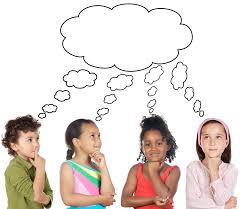 "If we want our students to be excited about literacy, they need to have teachers who love coming to work, who are literacy learners themselves, who find ways to make curriculum relevant to children's lives, and who can put high-stakes testing in perspective." -Regie Routman -The Essential Reading Life I read a chapter in the book "Reading Essentials" by Regie Routman. The chapter reading gave me some incite into shared reading. The chapter noted that shared reading is a part of the literacy block that-for some educators-is missing or non-existent. Routman defines shared reading by saying: "In shared reading, a learner- or group of learner- sees the text, observes an expert (usually the teacher) reading it with fluency and expression, and is invited to read along." (Essentials of Reading, Routman 2003) Shared reading is a way to show children how to read text, how they can think through text, and see, in a safe way what good readers do. It can be the scaffolding students need to feel successful. The chapter also mentions the Optimal learning Model, in the model (pictured) we see that teachers make reading "visible" and "explicit" during a shared reading and gradually release that responsibility (scaffolding) with exposure to the text. When students are in kindergarten the shared reading looks like the teacher rereading a familiar book with catchy repeated text that the students remember seeing and repeat as the teacher touches and says the words with them. By the time students are in second grade, shared readings are good ways to practice various aspects of reading in a way that students can feel safe to participate with the teacher. The chapter mentions a few reasons why shared reading is important:
Check out this video of a shared reading using a read-aloud. Thanks for reading. Feel free to leave feedback and look out for my next post.
0 Comments
"Ideal conversation must be an exchange of thought, and not, as many of those who worry most about their shortcomings believe, an eloquent exhibition of wit or oratory." Emily Post Many teachers read to children, some daily; as they should. Reading aloud is one good way to begin a conversation about literature. What are we talking about when we read to them? Are we having conversations about what is read? How often do we have conversations with them at all? In today's times I am seeing more and more children who are not good thinkers., because they are not allow to. Students are being taught to sit still and be quiet. Which says to children; "What you think does not matter.'" I see children who are not good at expressing themselves. We still have quiet classrooms with straight rows of children. No student autonomy at all. Children don't know how to have conversations because they are not allowed to talk to each other. Conversations are not happening at school or at home. We need to change that and one way to do it is to have conversations about what we are reading to them and what they are reading to each other. Completing those think aloud and allowing those "turn and talks" about literature is one way to cultivate that need. Children should be given the chance to express what they think about what they hear and read in good literature. The classroom needs to be a safe place for students to express themselves and what better way than to have conversations about reading. Thank you for reading... |
AuthorPearl Garden, Ed.D has completed her dissertation research involving understanding the vocabulary instruction practices of early grade teachers. She has a passion for the new and novice educator, and it is her goal to help educators tackle the achievement gap with her research findings. She will use this blog to share what she has learned in “pearls of literacy”. The ideas come from her dissertation titled “A Content Analysis of the Vocabulary Instruction Habits by Early Grade Teachers”. Archives
January 2024
Categories |

 RSS Feed
RSS Feed